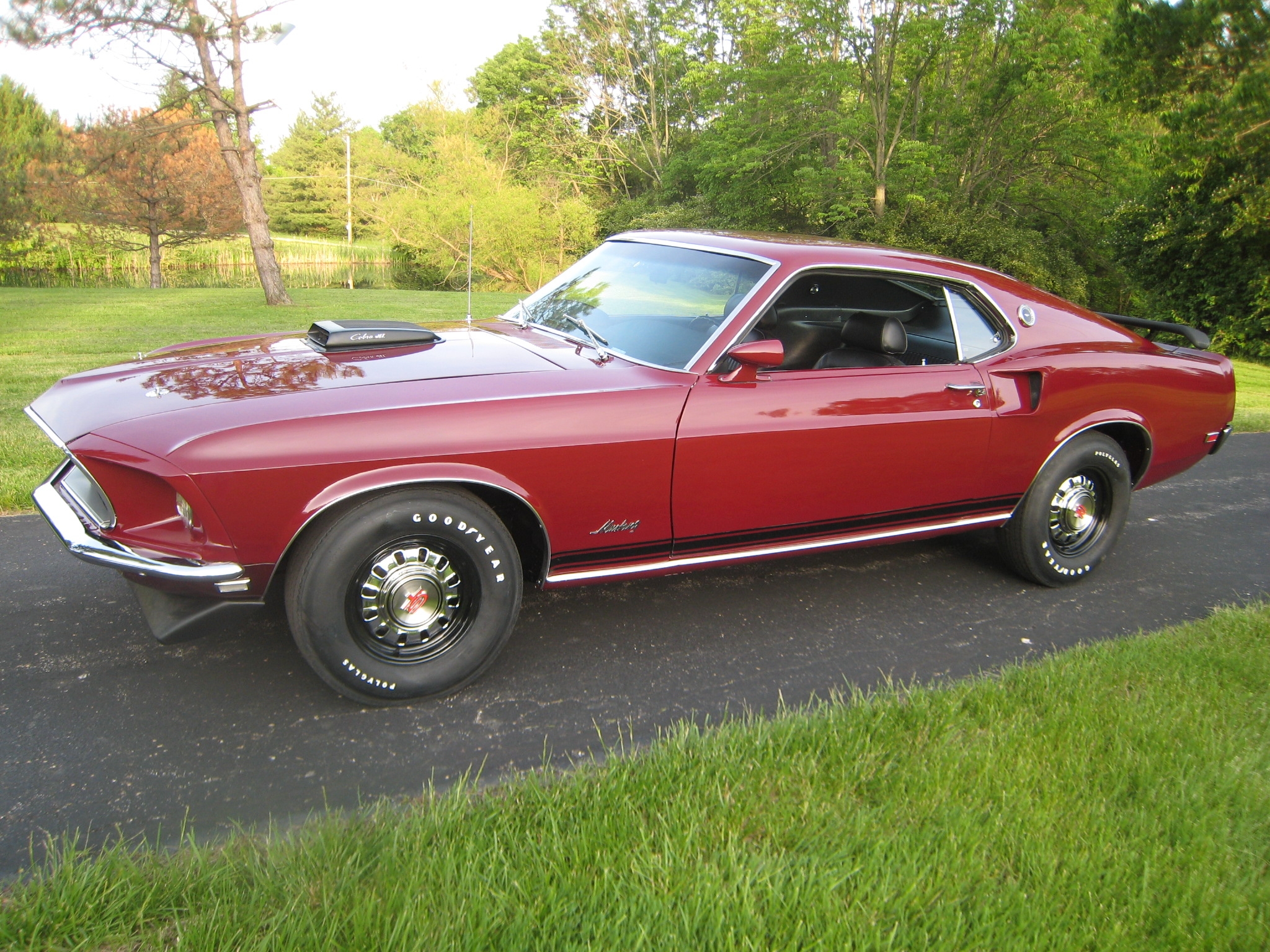SCM Analysis
Detailing
| Vehicle: | 1969 Mustang GT Cobra Jet 428 |
| Years Produced: | 1965–1969 (GT model) |
| Number Produced: | 4,973 (according to Marti), 5,396 (depending on whom you ask) in 1969 |
| Original List Price: | About $3,400 |
| SCM Valuation: | $45,000–$70,000 |
| Tune Up Cost: | $300 |
| Distributor Caps: | $20 |
| Chassis Number Location: | VIN lower left dash |
| Engine Number Location: | Above starter (part number and date code only, no VIN stamp on block) |
| Club Info: | Mustang Club of America |
| Website: | http://www.mustang.org |
| Alternatives: | 1970–1972 440 ’Cuda 1968-1972 Pontiac GTO 1967-1969 Camaro SS 396 |
| Investment Grade: | C |
This car, Lot 669, sold for $55,000, including buyer’s premium, at Barrett-Jackson’s Las Vegas Auction, which took place September 22–24, 2011.
The Mustang GT is arguably one of the most well-known models in the world of late ’60s muscle cars. It had a run of only four short years from 1965 through 1969 before taking an eleven-year hiatus, but four years was all it took to get those two simple letters into the American car buying psyche. The GT became synonymous with the Mustang almost immediately, as it represented the top of the pecking order on the Mustang checklist.
At least until 1969, when the Mach 1 was introduced.
The Mach 1 was essentially an appearance package (with some suspension tweaks to offset added weight on bigger-engine cars), but Ford managed to move more than 72,000 of them. The recipe worked for Ford, and since the engine had to be a 351-ci V8 or bigger, the go matched the show.
What made a GT in 1969?
So what’s special about the ’69 GT? Well, the short answer is not much, as you could get most of the options as part of the new Mach 1 package, or could order them independently on any other Mustang body.
The GT in 1969 was less of an appearance package than the Mach 1, with only a subtle lower body stripe, but it did have unique stylistic changes that did a good job of implying performance — you got bespoke GT wheels, stickier tires, hood pins, and a pop-open gas cap. The GT package also included uprated springs and shocks, paired with a larger front sway bar. Disc brakes were still an option, as they were on the 1968 model year.
There’s a cloud around actual GT production, which landed around 5,000 units, or only 7% of what Ford delivered in Mach 1 garb. To add further confusion to any question of GT authenticity, many dealers actually used catalog parts from Ford to build GTs from otherwise pedestrian Mustangs. Build sheets are the only real way to determine actual GT status as produced by Ford.
But with so many dealer-built imposters, a 10% swing on agreed-upon production figures seems to be the norm for the GT. Since original build sheets were not always with the car from the factory or were inadvertently destroyed over the years, many owners simply can’t prove their cars to be factory-built GTs.
Doesn’t rarity equal value?
With values of big-block Mach 1 Mustangs easily topping $75,000 these days, shouldn’t a much rarer derivative of the same Mustang chassis — with all the performance options included — be incrementally more desirable and therefore more expensive? You might expect so, but that’s not always the case.
A lot goes into valuing a car, but for many of us, the real determination of value is the feeling, the nostalgia, and the story that can be told about it. Did you have this car in high school? Did the quarterback of the football team have one? Did this car win at Sebring? Is this the only one in existence? Without a really good answer (for yourself or others) to any of these questions, a car just becomes ordinary in the eyes of the market.
So at $55,000, does this figure really represent the true market value of this package? Let’s ask the questions:
Does it have racing pedigree? No.
Is this car iconic, insofar that it was most-wanted in high school? Sure, but most prefer the Mach 1.
Is this the only one in existence? Yes, in this trim package and color combo, it is stated to be one of one, but there were nearly 300,000 Mustangs made by Ford in 1969.
If this car represents a true one of one, why not a bigger price tag? The simple answer is cachet — the Mach 1 simply has more of it than the more subtle-appearing GT does, even with the rare engine.
Where’s the original mill?
This car showed well, but what made it really attractive was the full-zoot, 335-hp 428 CJ and 4-speed manual. Full disclosure was offered with the statement of a correct replacement engine being fitted. A correct casting number replacement engine does affect value, but it should not be a huge deterrent, because it’s relatively common — many of these cars fell into the hands of poor-shifting, over-revving kids.
What happened to its original engine? Did it get a window in the side during drag racing, or did it have 200,000 miles and need a 0.080 overbore to make it right?
No mention of this car’s mileage was made. Was this a junkyard resurrection or the restoration of a well- taken-care-of example? We may never know.
Regardless, in its restored condition, this was an appealing ’69 GT with some of the best options available. It may not have had the eyeball of a Mach 1, but you can’t build a similar example for what was spent here — at least not using professional services. Forget what your high school quarterback drove — for seat-of-your-pants fun at an affordable price, this GT was a deal.
(Introductory description courtesy of Barrett-Jackson.)<p
